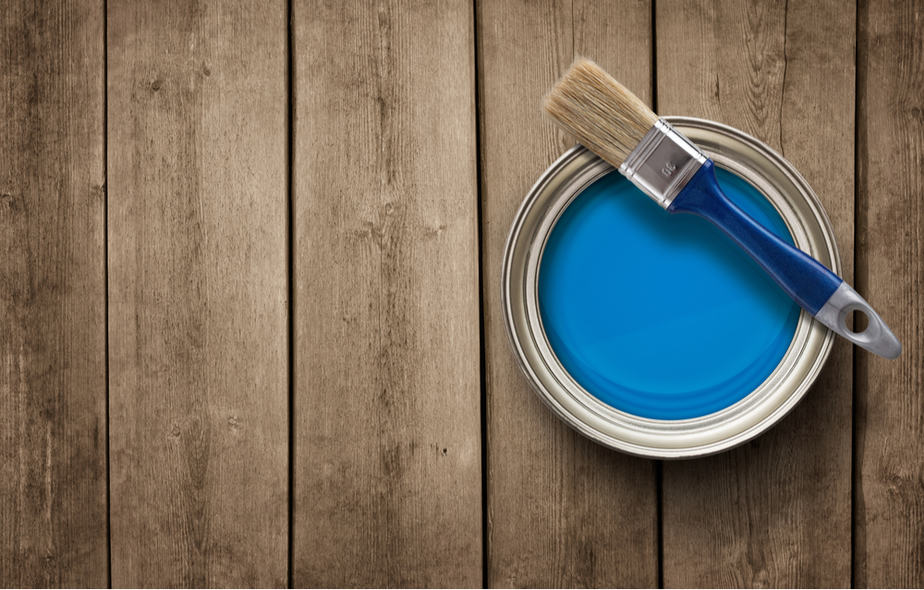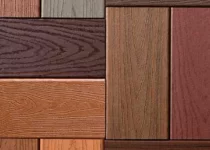Latex vs Enamel paint simplified
Any painting endeavor may seem overwhelming if you are unfamiliar with the many types of paint and the materials or conditions they work best with. The two most common varieties of paint, enamel, and latex, must be used on certain surfaces in a certain way.
You can pick the correct type of paint for your project with more excellent knowledge if you know a few key distinctions between the two types of paint. We conducted an extensive study on the subject to provide you with a comprehensive report outlining the fundamental differences between enamel and latex paint and which to use for a successful painting project.
The paint base is the primary difference between latex and enamel paint. Latex paint is water-based, and enamel paint is oil-based. Enamel and oil-based paints are suitable for hard surfaces since they dry slowly yet are incredibly durable. Water-based or latex paints are better for tasks where movement and flexibility are required or where the surface may expand since they dry more quickly and are more pliable.

What is Enamel Paint?
The phrase is derived from the glass casing method. This appearance is reproduced with enamel paint, widely recognized for its capacity to solidify into a glossy shell. As a result, it is very well-liked by hobbyists since it helps to make little crafts durable. It typically contains oil, which makes it water resistant and stain-resistant as it dries.
Water-based enamel is beginning to appear on the market, even though most enamel is oil-based. Since the word has been overused, not all enamel paints are oil-based. Keep an eye out for the differences between oil-based and water-based enamel paint since there are a few.
What is Latex paint?
Similar to how enamel does not include glass, latex does not contain any genuine latex. The term describes the material’s aqueous dispersion and the latex-like appearance of the substance within the container. People with latex allergies shouldn’t touch or use the paint.
With several uses, it is also the most widely used paint in current times. While some are better suited for outdoor usage, others are mold and mildew-resistant. Even latex paint resembles enamel but is not the same because it is water-based.
Latex vs. Enamel Paint
The paint’s foundation may appear to be unimportant. However, the oil and water bases influence a few additional parameters. These characteristics include how the paint is applied and which paint is suited for particular jobs.
Due to the diverse paint bases, the pigments are communicated by the paints in different ways. A solvent conveys enamel pigments instead of latex paint, an emulsion based on water. Solvents and paint thinners are comparable. As a result, this fundamental difference is the source of many variations. Below, each of these characteristics will be covered in further detail.

Brushes
There are various possibilities available if you want to apply paint to your surface using a brush, and specific brushes could be suggested for particular colors. Although they may absorb water from latex paints, natural bristle brushes, like the pig hair brushes below, are suitable for use with enamel paints. Both latex and enamel paint may be applied using synthetic brushes, such as the ones in the picture at the bottom.
Interior vs. exterior use
The use of flat or eggshell-finished latex paint on interior walls and ceilings has become more common. Most interior projects benefit significantly from the versatility, water resistance, and ease of cleaning of latex paint. Even when thoroughly dried, latex paint is somewhat flexible while being durable and waterproof, making it unsuitable for outdoor application.
Enamel paint’s hard, and the glossy texture may seem harsh and antiquated on large interior surfaces, but it is ideally suited for outdoor exposure to weather and sunlight. Exterior oil-based paints in earth tones like beige, tan, or taupe disintegrate and fade less over time than oil-based or enamel paint, which fades and yellows with time.
Drying times
When leveled and cured correctly, thick, even layers of paint may provide a surface that is smooth and free of brush marks. Latex paint has to be applied immediately and given time to level since it dries more rapidly. Due to the oil-based paint’s ability to absorb the painted surface, enamel paint dries more slowly but has a superior sheen. Enamel paint may be kept in place for extended periods to create a uniform, thick coating since it dries more slowly.
Fumes
High levels of paint fumes may make you feel lightheaded, give you headaches, irritate your eyes, and make it difficult to breathe. Latex paint is preferable for larger jobs and walls since it has a gentler odor than enamel paint. Oil-based enamel should only be used for minor works or applied outside if feasible due to its higher toxicity. If you must use either kind of paint inside, ensure the space is well-ventilated and, if possible, leave doors and windows open to let air flow through.
Durability
While both paint kinds may be durable under the right circumstances, enamel paint is often more resilient. Enamel paint is more adapted to resist the varying weather and temperatures of the outdoors since it is designed to cure more robustly than latex paints, which remain somewhat flexible after drying.
Additives
By gradually thinning the paint, extending the drying period, and helping the paint to level and lie flat for a smooth surface, paint additives, extenders, and conditioners may enhance the appearance of your painted item. The most popular latex paint additive, but not the only one available, is floetrol. The most common oil-based paint addition is penetrol. However, there are other options as well.
Finish
You could find it helpful to limit your paint choices if you decide on the desired finish for your project. Only latex paints are available in flat, matte, and eggshell finishes. Of the two latex finishes, this one is the sleekest and most contemporary. The surface of latex paint is durable enough to handle high-traffic areas in your house and is simple to keep clean. Both latex and enamel paints come in satin finishes.
When enamel dries, it becomes durable, glass-like, stain-resistant, and cleanable. Due to the long lifespan of the paint’s surface, satin, semi-gloss, and high-gloss oil-based or enamel paints are often utilized for trim, cabinets, and other high-impact areas.
Clean-up
Water and a rag are often used to clean latex artworks. Cleaning latex paints is simple since they are water-based. Brushes and surfaces splattered with enamel paint need a paint thinner, such as the one seen below, to be cleaned.
There are several similarities between latex and enamel.
Even though latex and enamel are incomparably different, they have a few traits. Additionally, latex paint that resembles enamel has been produced. Here, water-based enamel, which has many qualities with latex enamel, is used.
Both are excellent for doors and trimmings because they may provide a superb gloss finish. They both often need priming for optimum results despite being widely used on various materials.
Which advantages does enamel paint offer?
Although the prolonged drying time of oil-based enamel paint would seem to be a drawback, it provides you more time to apply a smooth layer. Enamel paint covers a greater surface area and adheres to surfaces more smoothly than latex paint. The required faultless, long-lasting finish will be produced by smooth, thick enamel paint applications that have been leveled and allowed to dry.
The simplicity of washing enamel paint is another benefit. In general, the simpler it is to clean, the glossier the paint finish. In addition to being waterproof, enamel paint is ideal for all outdoor applications.

Can latex paint peel easily?
For various reasons, peeling latex paint often signals that your paint’s adherence has failed. Bathrooms and other high-humidity places often have peeling paint, which is a sign that there is moisture or water present there. Without a primer, latex paint applied over oil-based or enamel paint would ultimately crack and peel.
Peeling could also happen if dirt and debris are on the surface before painting. Consequently, cleaning the surface of all dirt and debris is crucial and giving it time to dry before painting thoroughly.
It is possible to take several preventative measures to lessen the chance of paint peeling. Ensure your surface is free from dampness, dust, and other obstructions. To avoid adhesion failure, the wood should be completely dry before applying a primer. Paint peeling may be avoided using high-quality paint that hasn’t been hanging around for too long.
Does enamel paint resist water?
Waterproof enamel paint is produced using oil or lacquer. They are perfect for outdoor hardwood floors and projects because of their resistance to decay and wetness. Recently, water-based enamel paints known as acrylic enamels were created. However, they are not waterproof. checkout how to remove paint from laminate floors to make them clean after wall paint job in your house.
Is it possible to paint latex over enamel and vice versa?
It can only be painted over directly if it has been prepared prior. Enamel has a gleaming surface, which makes latex attachment difficult. Sand it down and prime it before painting over it. Water-based enamel adheres better because it peels less often.
Attempting to paint over enamel paint with latex would pose further problems since enamel paint is often oil-based. The enamel paint’s water resistance prevents the latex from adhering, which results in it peeling and breaking as it cures.
Latex paint does not adhere as well as enamel paint. All that is required to aid in the shell’s adhesion to the latex surface is a primer.
What does the term “latex enamel paint” mean?
It may be confusing to encounter latex enamel paint. Enamel and oil-based paints have a long history together. The term “latex enamel” describes latex paints’ more robust, smoother finishes. Most of these substitutes are still water-based latex paints, but the manufacturer adds “enamel” to imply that the formulation is more robust than most other options.

Can latex be painted over enamel paint?
Uncommon knowledge about latex and enamel paints is that latex may be applied directly over enamel. However, the procedure is a little more involved. Sand the surface with 100-grit sandpaper to remove the shiny finish before painting latex over enamel. After that, clean and prepare the surface for latex paint.
Latex paint may deteriorate or peel more over time than oil-based paint. After a few years, you may need to refinish the coating. This kind of paint application is typical of outdoor labor.
On the other hand, oil-based paints cannot be applied directly over latex. Each layer of latex must first be primed with a water-based primer before using enamel over it. know more about painting latex paint over oil based primer in our guide for the same topic
Conclusion
Latex and enamel paints could be misleading since they don’t contain the ingredients indicated on the label. Many modern paint formulations combine components of the two to create unique compositions, such as latex enamels and acrylic enamels.
Keep in mind that enamel paint is more resilient than latex paint, which is softer. Selecting the right paint for any project will be made easier for you if you know the distinctions.

FAQ
-
Is semi-gloss paint the same as enamel paint?
Although they both seem glossy, semi-gloss does not create a shell. Just a lustrous sheen that resembles enamel. As its name suggests, it only provides a semi-gloss finish to whatever you’re painting, but it also has comparable qualities like wash ability and shine.
-
Can latex paint and water-based enamel paint be combined?
They are too different from being combined, even though they are water-based. It will reduce latex’s flexibility and diminish the enamel’s sheen on painted surfaces. While combining the two is possible, the outcome will be unpleasant, and the new paint will lack both of its most delicate features.
-
Is latex paint less enduring than enamel paint?
While both paint kinds may be durable under the right circumstances, enamel paint is often more resilient. Enamel paint is more adapted to resist the varying weather and temperatures of the outdoors since it is designed to cure more robustly than latex paints, which remain somewhat flexible after drying.
-
What is the purpose of latex enamel paint?
The application of All Surface Enamel on wood, metal, drywall, and other interior and outdoor surfaces is its intended use. This premium coating keeps its shine and color while withstanding weather and sunlight. It may be used on doors, window trim, and other high-wear areas because of its outstanding durability.

Being associated with art and craft field since decades as a hobbyist and life long learner has given me an opportunity to learn many new things related to art, craft, paints and pottery which i am trying to share with your guys on this website. I have expertise of being professional painter and potter for the last 20+ years
I have learned mind blowing cool tips and insights which makes me a person with ability to improvise and come up with creative ideas and solutions to make stunning and impeccable art pieces of all types which are adored by people across the globe on this website and other platform.


